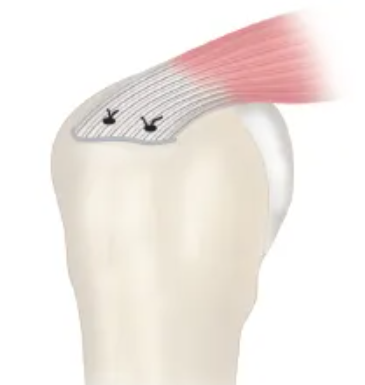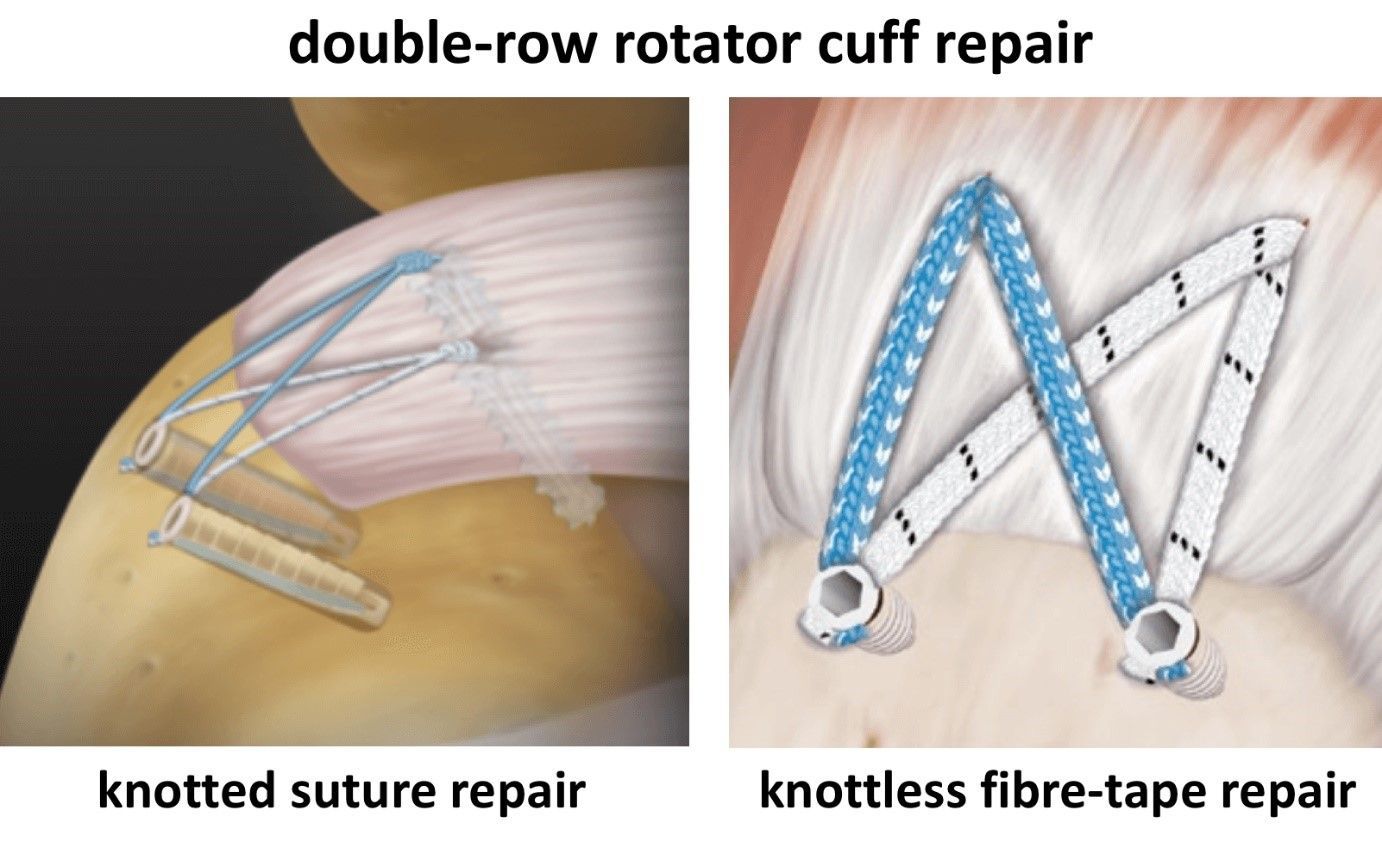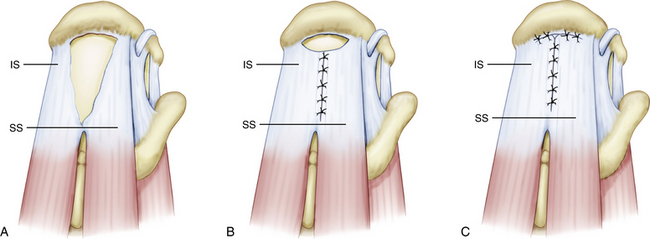Everything You Need to Know About Rotator Cuff Surgery
Are you considering rotator cuff surgery but feeling unsure about the risks and benefits? Surgeon Researcher can help. Our detailed article provides an in-depth overview of the surgery, including important information about the recovery process. With
Surgeon Researcher, you'll have all the knowledge you need to make an informed decision about your healthcare. Don't wait, read our article today and take the first step towards a healthier you.
🔳Overview
Understand What Rotator Cuff Surgery Is
A rotator cuff is a group of four muscles and their tendons that attach the shoulder blade to the upper arm bone and help stabilize and move the shoulder joint.
When the rotator cuff in the shoulder suffers tears or damage, a surgical treatment called rotator cuff repair may be necessary. There are also causes of rotator cuff injury- which may result in shoulder arthroplasty.
What are the Symptoms of Rotator Cuff Tears?
Depending on the degree of the tear, rotator cuff injuries can cause a wide range of symptoms.
- Shoulder pain that is exacerbated by reaching or raising.
- Fatigue in the arm makes even simple tasks challenging.
- You feel like your shoulder is popping or clicking.
- Shoulder mobility is restricted.
- Pain in the shoulder makes it difficult to sleep on that side.
🔳Procedure: Before, During, and After
Before the Surgery
There are critical preparations that must be in your pre-operative instructions prior to rotator cuff surgery may be performed successfully. Examples of such things could be:
- Medical evaluation: To find out if you are fit and active enough for surgery, you will need to get a full medical checkup. This could involve blood tests, imaging tests, or other ways to figure out what's wrong.
- Pre-operative physical therapy: Physical therapy before surgery can help you get stronger and keep improving your range of motion, which can help you get better faster.
- Medications: Before surgery, your surgeon may tell you to quit taking certain medicines, like those that thin your blood.
- Fasting: Before the surgery, you will probably be told not to eat or drink anything for a few hours.
- Planning for aftercare: You must make plans for your care after surgery, such as how you will get back to your home and who will aid you with your everyday chores while you are healing.
- Preparing your home: You might need to make changes to your residence to help you get better, like putting grab rails in the shower room or rearranging the decor to facilitate your ability to move around.
- Mental preparation: Rotator cuff surgery may be a big deal, so it's crucial to get your mind ready for the surgery and the time it takes to heal. This could mean talking to your surgeon or a professional in mental health about any worries you have.
During the Surgery:
The damaged rotator cuff tendon is accessed through an incision made in the shoulder during rotator cuff surgery. The extent and position of the tear will determine the kind of surgery that is performed.
Surgery options for repairing rotator cuff damage include tendon transfers and partial cuff repairs.
Partial Rotator Cuff Repair
Only the damaged segment of the rotator cuff tendon is stitched back together in a partial rotator cuff repair. For mild to moderate injuries, surgeons can utilize anchors and sutures to restore the tendon to the bone. Arthroscopic procedures, which entail creating small incisions in the skin and using a tiny camera to direct the surgical instruments, are commonly used for the procedure.
Tendon Transfer Surgery
If your rotator cuff tendon is ripped or otherwise injured, you may be a candidate for tendon transfer surgery. The tendon used in a tendon transfer may be from a neighboring muscle on the patient's body or from a donor. The surgeon will cut the new tendon free and suture it or attach it to the shoulder bone. For rotator cuff rips that are too extensive for partial repair, this method is sometimes the only option.
Access
Your surgeon must gain access to the portion of your rotator cuff that is torn.
The most common tear site is where the rotator cuff tendon attaches to the bone of your humeral head.
A rotator cuff tear typically looks something like this: (see photo on the side)
Surgeons have 2 options to gain access:
- Arthroscopically using a small video camera.
- Open. They create an incision through your skin, fat, and muscles so they can see the rotator cuff tear with their eyes.
This is your surgeon’s view of your shoulder during an arthroscopic rotator cuff repair: (see photo below)
After the Surgery:
If you do everything your surgeon tells you to do after rotator cuff surgery, you'll have a better chance of getting better. You might want to include the following general suggestions in your post-operative care after surgery:
- Pain management: You will probably be given painkillers to help you deal with pain for a few days following your operation. It is crucial that you utilize these medicines as directed and let your surgeon know if you have any adverse reactions or concerns.
- Immobilization: After surgery, your rotator cuff may need to heal while your arm is in a brace. To safeguard the surgical site, it is essential that you use the shoulder strap as directed.
- Physical therapy: This is an important part of getting better after surgery on the rotator cuff. Your surgeon will probably suggest a set of workouts and stretches to improve your shoulder's range of motion and strength. It's important to go to all your physical therapy meetings and do your home exercises the way your therapist tells you to.
- Rest and activity restrictions: After surgery, you must avoid doing things like lifting heavy things or reaching above your head for a while, so you don't hurt the rotator cuff again. Your surgeon will tell you exactly what activities you should avoid and for how long.
- Follow-up appointments: You will need to attend follow-up appointments with your doctor to monitor your progress and ensure that the rotator cuff is healing properly.
- Patience: Hence, it is crucial to be calm and allow the body the necessary time to heal. A few months may pass prior to being able to return to your regular activities, but the damage will heal on its own.
🔳Risks and Benefits
Benefits
- One of the main advantages of rotator cuff surgery is the reduction of pain. Patients can feel much less discomfort and have better shoulder function when tendon tears are repaired.
- Shoulder endurance, range of movement, and overall function can all benefit from rotator cuff surgery.
- Injury to the rotator cuff that might otherwise occur if the tear were left untreated can sometimes be avoided with surgery.
Risks
- Infection: Infection is always a possibility following surgery. Antibiotics will be given to patients prior to, during, and following surgery to reduce the likelihood of infection.
- Another potential complication of surgery is bleeding. In extreme cases, this may necessitate a transfusion.
- Numbness, weakness, or a lack of mobility in the arm or hand can be the result of nerve injury that occurs after surgery.
- Shoulder stiffness is a common side effect of shoulder surgery. Although physical treatment can help, it may take some time before the affected individual has full mobility again.
- The repaired tendon may re-tear in rare instances. Patients who resume strenuous activity shortly after surgery are more likely to experience this.
🔳Recovery
Recovery Timeline
The length of time it takes to recover from rotator cuff surgery varies from patient to patient, from damage to injury, and from surgery to operation. After surgery, patients often recover by using a sling and engaging in physical therapy to rebuild shoulder strength and mobility.
Timeline for typical rotator cuff surgery recuperation:
The first week following surgery is dedicated to pain and swelling management. A sling may be used to immobilize and support the affected arm. Shoulder stiffness can be avoided with the use of physical therapy exercises.
The second to sixth weeks are dedicated to regaining shoulder mobility. As the shoulder improves, the sling may no longer be necessary, but the physical therapy activities will increase in difficulty.
Physical treatment for the shoulder may be increased from weeks 6-12 to assist regain of complete motion as well as power in the afflicted arm.
After three to six months, most patients can return to their regular routines, though they may still benefit from continuing physical therapy to guarantee a full recovery.
If patients want the greatest potential results from surgery, they need to pay close attention to their post-op instructions and show up to all their physical therapy sessions.
Do you want to make sure you are seeing a skilled surgeon?
We're here to assist you in making an informed decision about your surgeon selection





